
Athens, the capital of a nation that is experiencing what can only be described as profound historical moments, may be at the center of the world’s attention but one should have in mind that going through a financial crisis does not necessarily mean going through a creative crisis as well. The 3rd Athens Biennale 2011 MONODROME (23 October- 11 December 2011), the largest international contemporary art exhibition in Greece, is proof that the heart of the city is still beating hard. After all, art may not be the answer to all problems but it can certainly raise some interesting questions. Curated by renowned curator and art theorist Nicolas Bourriaud and X&Y (Xenia Kalpaktsoglou & Poka-Yio, co-directors of the Athens Biennale), MONODROME revolves around an unlikely encounter: the Little Prince meets Walter Benjamin.
The 3rd Athens Biennale is the final part of a trilogy which started with DESTROY ATHENS 2007 and continued with HEAVEN 2009. MONODROME functions as a network umbrella that embraces many events and projects in the centre of Athens, with 110 participating artists plus an array of performances, interventions, workshops and public talks. The 3rd Athens Biennale is being held at the Diplareios School at Plateia Theatrou (a seminal Arts & Crafts School that operated for the largest part of the 20th century) and a complex of venues at Parko Eleftherias, including the Arts Centre, the Eleftherios Venizelos Museum and the Museum of Anti-dictatorial Democratic Resistance.
We invite you to discover all the little surprises that the 3rd Athens Biennale holds for you, through a detailed interview that its curators, Nicolas Bourriaud and X&Y (Xenia Kalpaktsoglou & Poka-Yio), gave to Yatzer. Enjoy!
3rd Athens Biennale 2011 MONODROME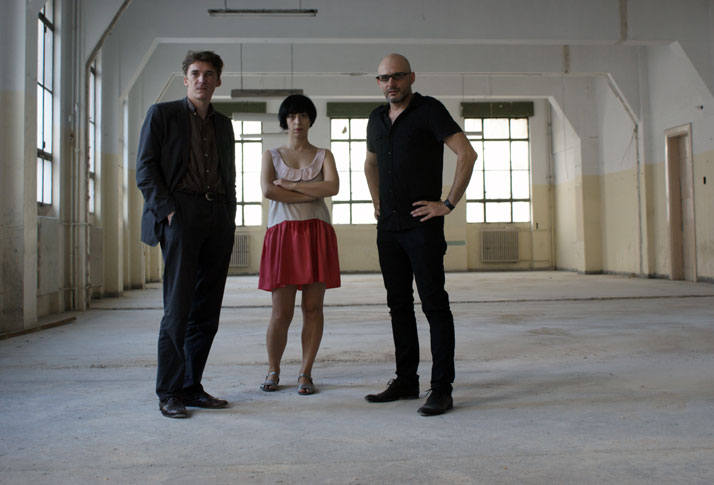
The 3rd Athens Biennale curators, Nicolas Bourriaud, Xenia Kalpaktsoglou and Poka-Yio at Diplareios School
Athens is a city that is experiencing an immense crisis at this very moment, not only economically but morally as well. I find it quite challenging preparing a major art event in a city where everything is under a constant transformation. In which way has this influenced the way that you curated the 3rd Biennale of Athens?
Things here in Greece are exceptionally difficult and complicated so maintaining the Biennale as such was in itself a political decision. MONODROME is being realized in the midst of an unprecedented crisis in contemporary Greek history, which indeed goes beyond its economical dimension. As the country lingers on the verge of bankruptcy, the funding for culture and education are among the first to suffer. The last decades have seen the emergence of biennials as programmed "blockbusters", willing to highlight a national scene and/or contribute to a city-branding politics, and are largely market-oriented. The financial crisis is forcing us to think about how a biennial can also be a pause, a reflexive moment, a vehicle with which we can question our aesthetic values and their relation to politics or ethics. MONODROME was conceived in a state of emergency and produced with very frugal means. The exhibition has hardly any sponsors and state support is still unconfirmed so it is materializing thanks to the enthusiasm and cooperation of all participants, the conviction and stamina of a dedicated team of people working for the organization, the invaluable assistance of a larger group of volunteers and the trust of visionary individuals, the Friends of the Athens Biennale.
3rd Athens Biennale 2011 MONODROME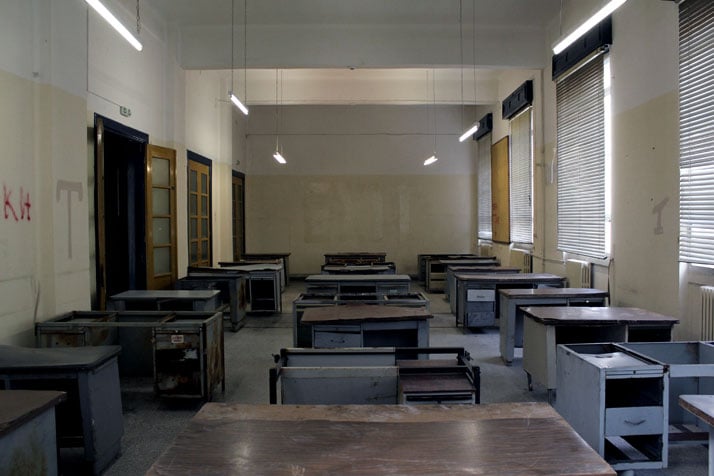
Under Construction
EXIT, 2009
Installation, mixed media, dimensions variables
installation view, photo © by Costas Voyatzis for Yatzer.com
3rd Athens Biennale 2011 MONODROME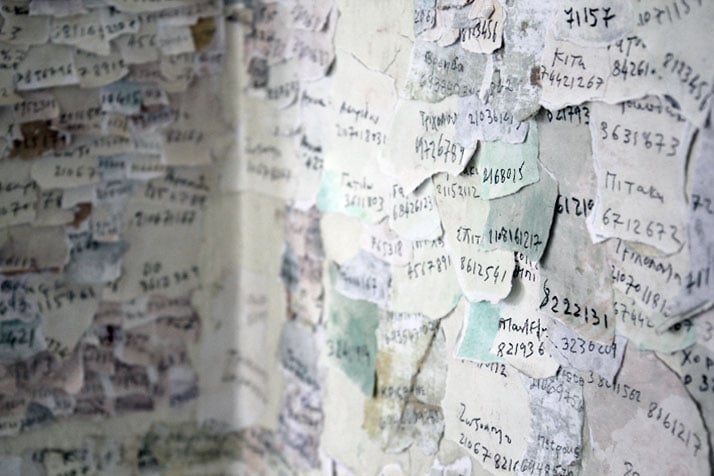
Rena Papaspyrou
Photocopies(2011)
Photocopies, various dimensions
Courtesy of the artist
installation view, photo © by Costas Voyatzis for Yatzer.com
3rd Athens Biennale 2011 MONODROME
Rena Papaspyrou
Photocopies (1980)
Photocopies, 252 items
29,7 x 21 cm each, total size 5,34 x 2,94 m
installation view, photo © by Costas Voyatzis for Yatzer.com
What should we expect from this year’s Biennale? Which is your greatest aspiration and which is your greatest fear?
The Greek crisis is not a purely national crisis; it is affecting the whole planet and comes from an international financial context. It is the local declination of the explosion of an economic bubble which affects every society today. How would it be possible to describe it without double-crossing the perspectives? We decided that the best way to reflect this situation was to organize a curatorial counter shot, to confront our position about the Greek landscape. In a sense, MONODROME seeks to assemble the diverse pieces of a speculative puzzle that addresses the "here and now", reflecting on the complex relations between the global and the local, and setting the tone for the exploration of “new modes” of cultural action. Ideally, MONODROME shows that art is not a supplement to a wealthy context, but an essential element in the social negotiations within a given society.
3rd Athens Biennale 2011 MONODROME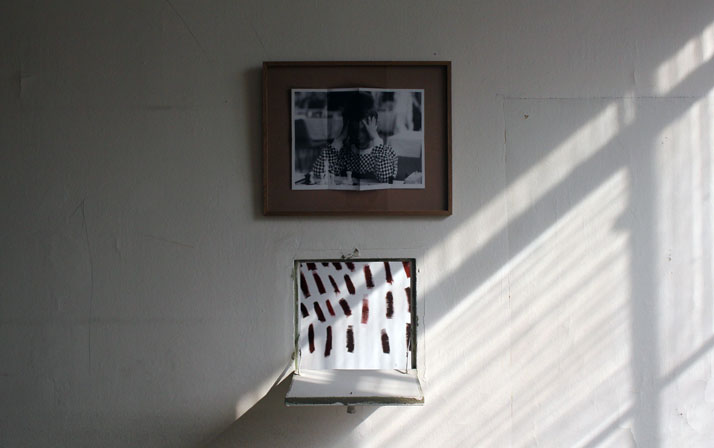
Sean Edwards
217.000 million years or The Photograph is the picture of a poster that was the invitation and the title of the exhibition, 2010
C-print, 53x43cm
Courtesy of Private Collection
installation view, photo © by Costas Voyatzis for Yatzer.com
photo © by Costas Voyatzis for Yatzer.com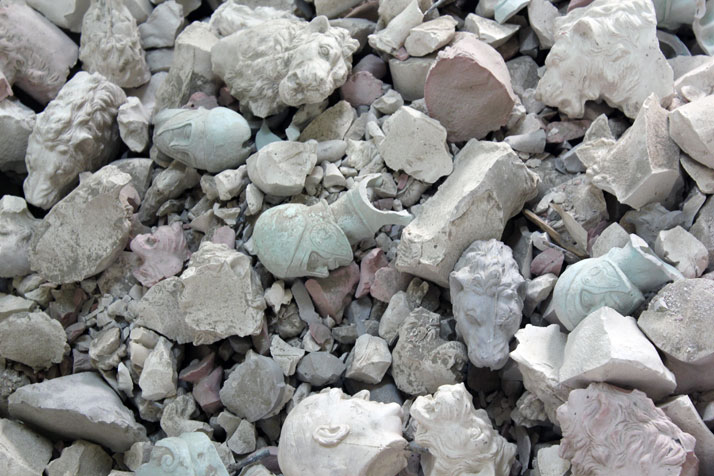
3rd Athens Biennale 2011 MONODROME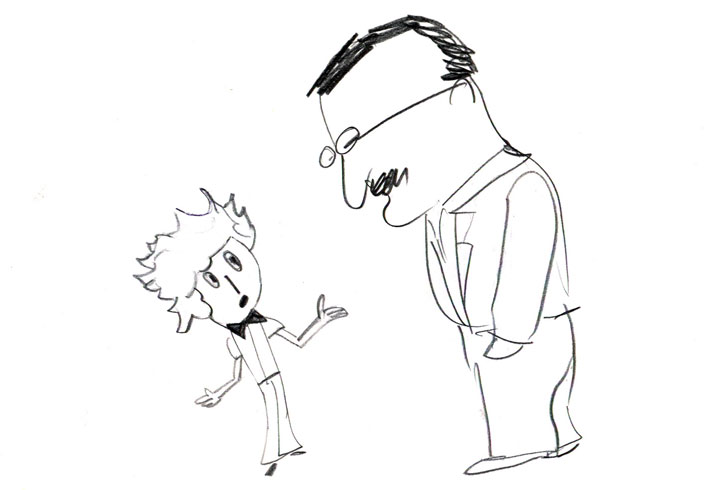
Walter Benjamin meets the Little Prince
Drawing by Poka-Yio © Athens Biennale
The main idea behind the 3rd Biennale of Athens is a very particular encounter: The Little Prince meets Walter Benjamin. How did you come up with the idea? How did this imaginary meeting condition your approach to the event?
MONODROME draws upon the life and work of Walter Benjamin and is loosely inspired by his book by the same title (One Way Street, 1928). It is an attempt to articulate a narrative via the imaginary dialogue between The Little Prince and Walter Benjamin. As the intellectual retreats defeated in the face of the escalated distress, the Little Prince keeps questioning this condition with the disarming innocence and the plainspoken boldness of a child.
installation view, photo © by Costas Voyatzis for Yatzer.com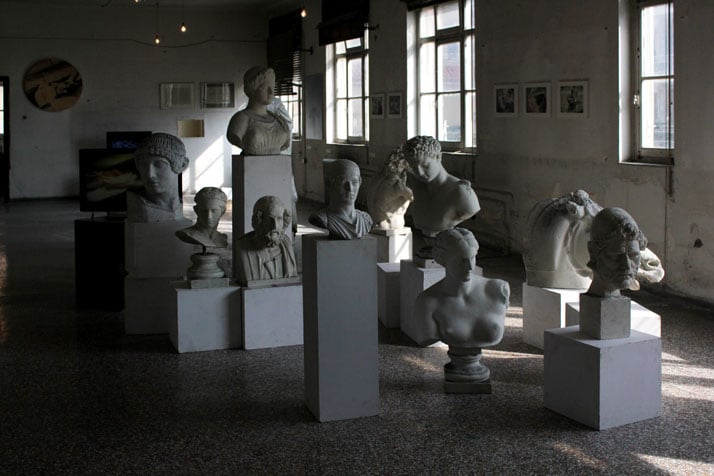
installation view, photo © by Costas Voyatzis for Yatzer.com
The 3rd Athens Biennale 2011 Monodrome is the final part of a trilogy which started with Destroy Athens 2007 and continued with Heaven 2009. Every title raises expectations since we have already formed an idea before deciding to visit the exhibition. Why Monodrome? Where does personal freedom stand in a situation that is perceived as a one way road? Is destruction the only "monodrome" to heaven?
Destroy Athens was a narrative study on personal dead ends concluding with the ultimate dead end; death. The second Athens Biennale, HEAVEN, was an interlude in which we dealt with the lost heavens, the unrealized utopias of the 20th century. The third edition makes all of this come full circle by returning to the first biennale motif and adds a new level of integration since this time around the dead end stops being personal and becomes collective. At a time when history is unfolding at an accelerated pace, art cannot but defy the reproduction of teleological pronouncements and the One-Way-Street questions the lust for self-flagellation and catastrophe.
3rd Athens Biennale 2011 MONODROME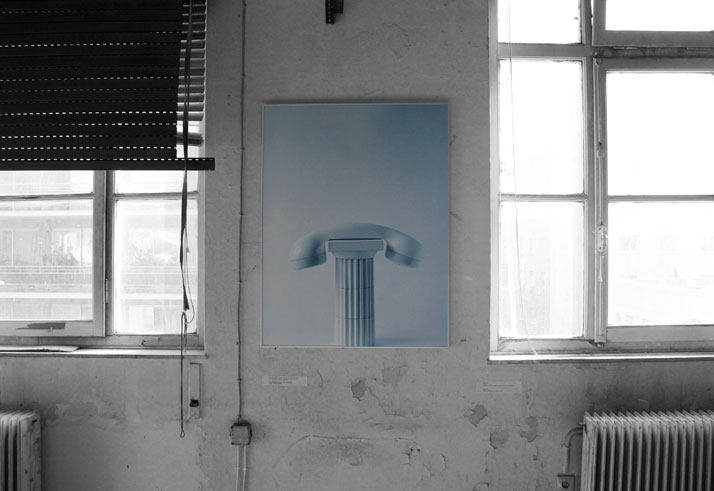
Annual Report for the promotion of Greek Telecom, 1972
Art director: Michalis Katzourakis-Jannis Angelopoulos
Courtesy of Michalis Katzourakis
installation view, photo © by Costas Voyatzis for Yatzer.com
3rd Athens Biennale 2011 MONODROME
Michalis Katzourakis
Vodolas M.56.A, 1995
Mixed media on cotton duck and corrugated steel, steel profiles, 160×230 cm
Courtesy of the artist
installation view, photo © by Costas Voyatzis for Yatzer.com
3rd Athens Biennale 2011 MONODROME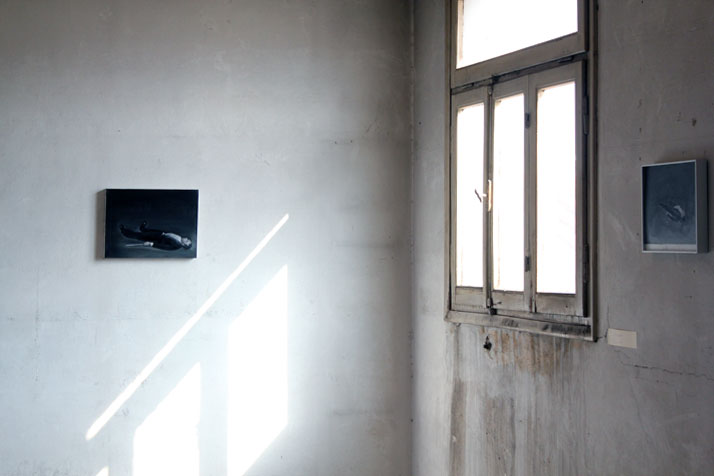
Vangelis Gokas
Dead Conductor, 2010
Oil on canvas
30 x 40 cm
Courtesy of the artist and Elika Gallery
installation view, photo © by Costas Voyatzis for Yatzer.com
Why did you choose the Diplareios School, the Eleftherios Venizelos Museum and the Museum of Anti-dictatorial Democratic Resistance for this year’s Biennale of Athens? Is there a specific dialogue you wanted to establish between the art and the venues?
In each biennale we move to a different site and a different location; our selection of venues is informed by the concept and also adds to it. MONODROME addresses and emphasizes various structures (national, historical, political, cultural, educational etc.) as well as the notion of the “sociology of institutions” and their “disciplinarily” character. These issues are primarily highlighted by the selection of the exhibition venues; the buildings that host the 3rd Athens Biennale take centre stage. Diplareios School- a seminal Arts & Crafts School that operated for the largest part of the 20th century - is located at Plateia Theatrou, a degraded block in the heart of the city that had fallen into oblivion. In addition, the venues at Eleftherias Park (Park of Liberty), namely the Arts Centre and the Eleftherios Venizelos Museum, constitute focal sites of Modern Greek history. In all three spaces artworks are put side by side with historical archives, documents, artifacts and ‘ruins’, mapping Greece and the 3rd Athens Biennale MONODROME as a derelict museum that transmits and resists the predetermined downfall.
3rd Athens Biennale 2011 MONODROME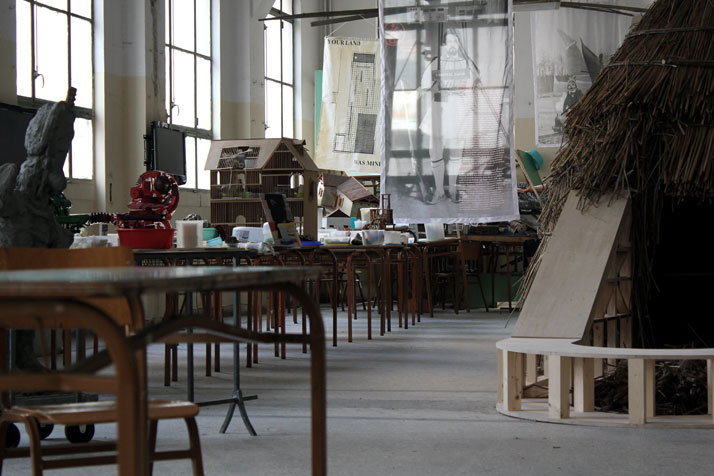
Nikos Charalambides
Carnival pause, 2011
Participatory project
Courtesy of the artist
installation view, photo © by Costas Voyatzis for Yatzer.com
3rd Athens Biennale 2011 MONODROME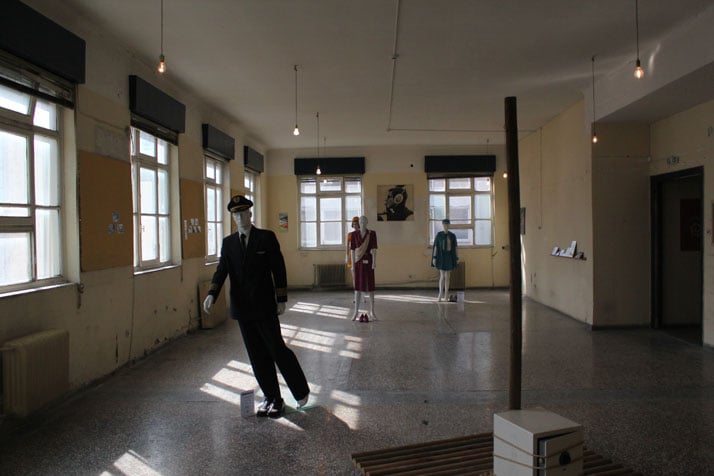
Room exhibiting artifacts from the collection of the Cultural Centre of Olympic Airways
installation view, photo © by Costas Voyatzis for Yatzer.com
3rd Athens Biennale 2011 MONODROME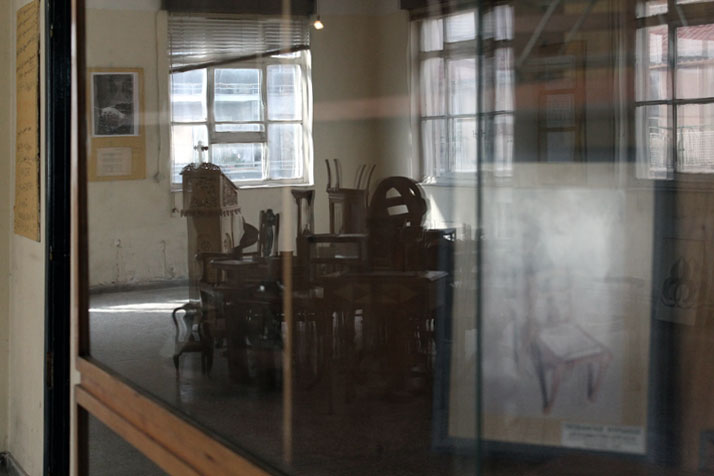
Furniture maquettes from the Collection of Diplareios School
photo © by Costas Voyatzis for Yatzer.com
3rd Athens Biennale 2011 MONODROME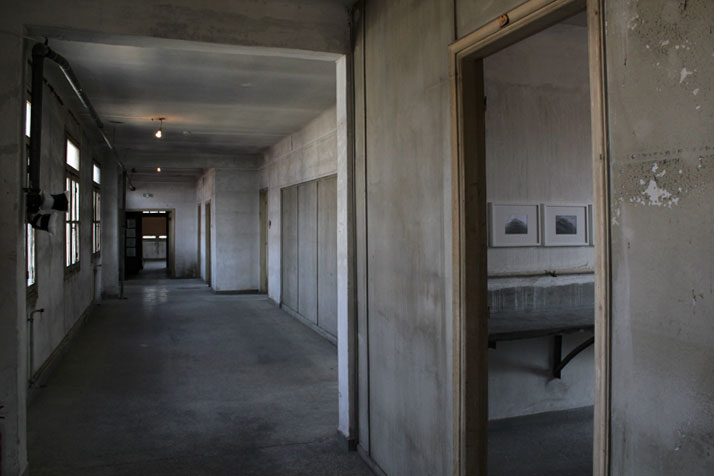
Pantelis Chandris
180o, 2010
Pencil on paper
15 x 20 cm
Courtesy of private collection
installation view, photo © by Costas Voyatzis for Yatzer.com
3rd Athens Biennale 2011 MONODROME
Vasileios Hatzis
Battleship Averof
Oil on cardboard, 14×23.5 cm
Courtesy of MARTINOS Antique Gallery
installation view, photo © by Costas Voyatzis for Yatzer.com
3rd Athens Biennale 2011 MONODROME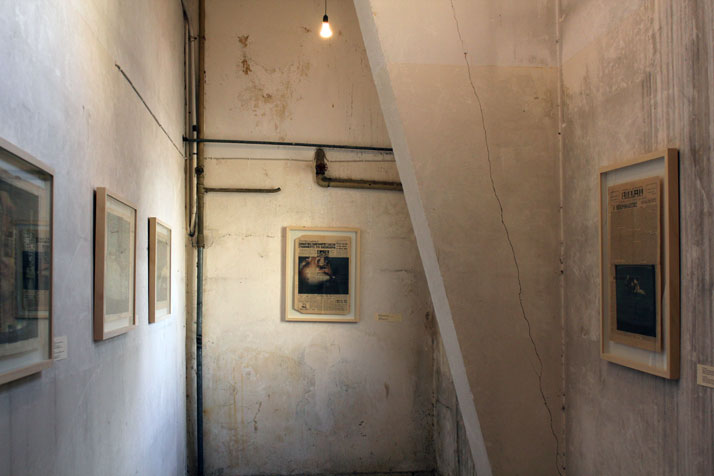
Vicky Pericleous
Exoticisms and Other Acts series, 2011
Newspaper, print, drawing, dimensions variable
Courtesy of Omikron Gallery, Nicosia, Cyprus
installation view, photo © by Costas Voyatzis for Yatzer.com
3rd Athens Biennale 2011 MONODROME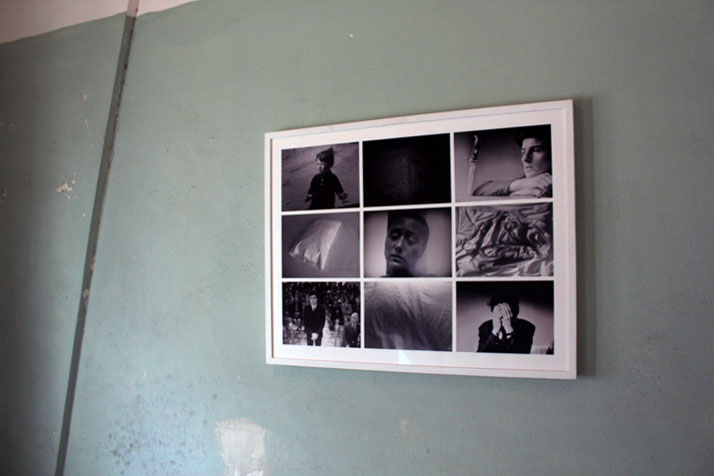
Yannis Theodoropoulos
Ioannis o Viaios, 2009
Polyptych of photographs in wooden frame, 95x76 cm
Courtesy of the Artist & AD gallery
installation view, photo © by Costas Voyatzis for Yatzer.com
3rd Athens Biennale 2011 MONODROME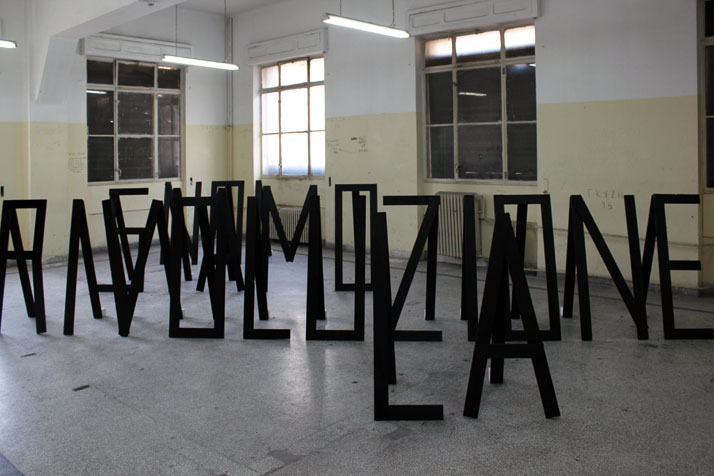
Kostas Bassanos, La Rivoluzione Siamo Noi, (2010)
Pallet wood, ink, plaster
600x500 cm
(Installation view)
Courtesy of the Artist & Ileana Tounta Contemporary Art Center
installation view, photo © by Costas Voyatzis for Yatzer.com
3rd Athens Biennale 2011 MONODROME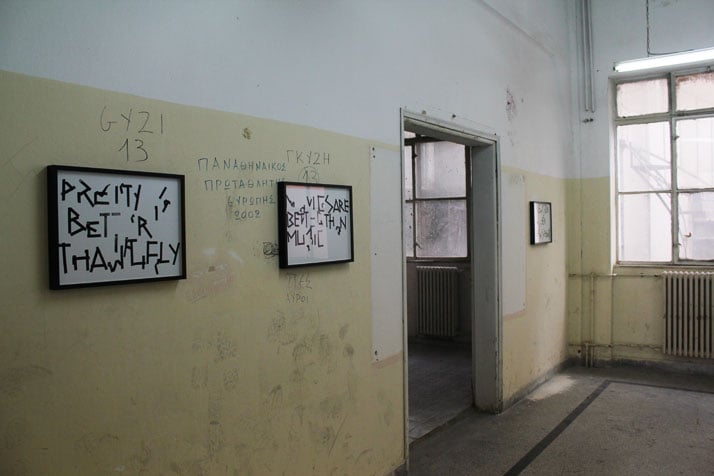
Matias Faldbakken
Untitled (Young is better than old), 2008ς
Series of 7 lightjet prints on Fuji archival grade paper, 37×49 cm
Courtesy of Private Collection
installation view, photo © by Costas Voyatzis for Yatzer.com
3rd Athens Biennale 2011 MONODROME
© Athens Biennale
Inspired by the theme of the 3rd Biennale of Athens, 'MONODROME' (One Way), Yorgos Zois, director of the award-winning ‘Casus Belli’, succeeded with six frames with a total duration of 25 seconds however upsetting ERT, the state television’s administration and legal department where eventually the video was 'cut' and thereby was not transmitted.
















